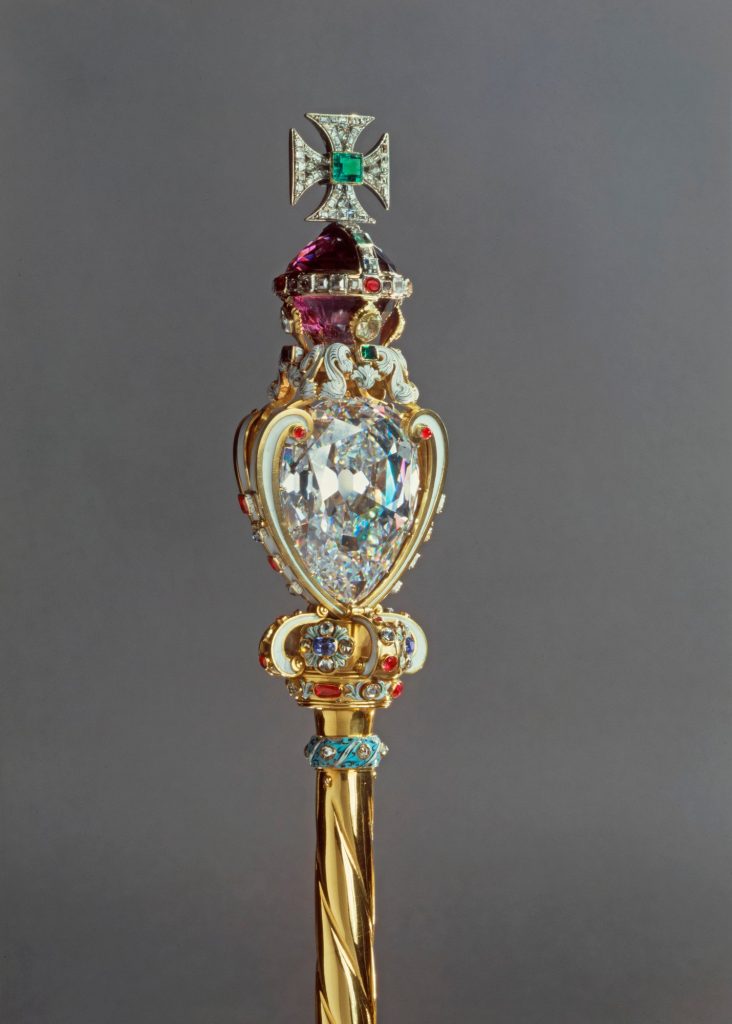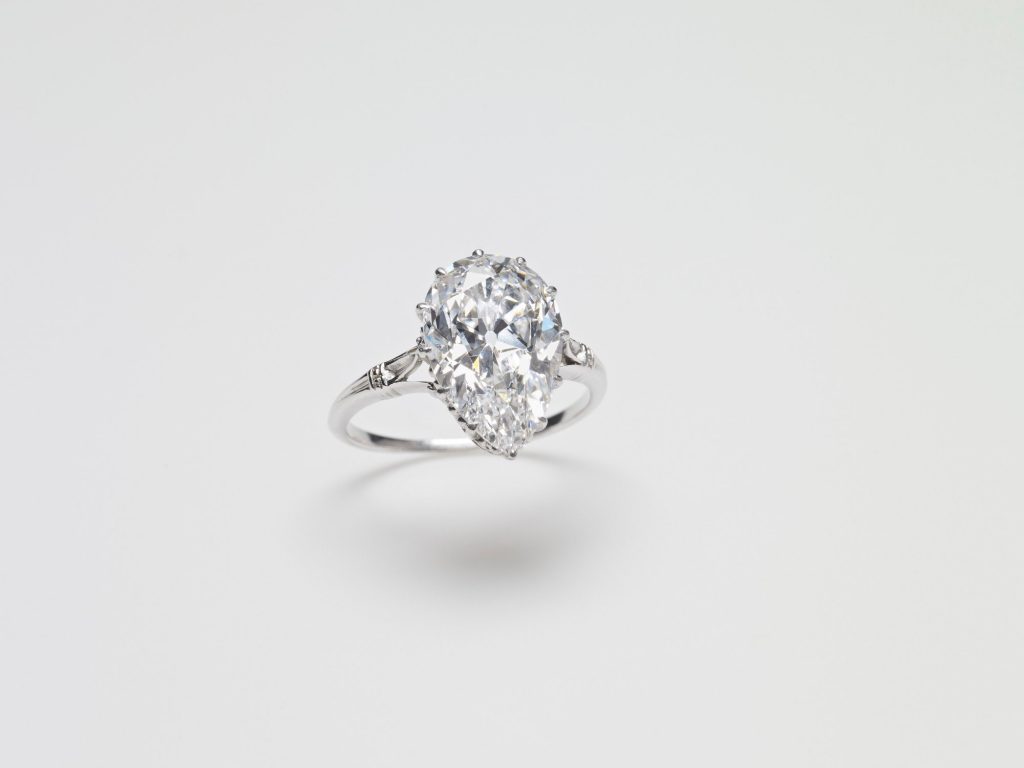by Scott Mehl
© Unofficial Royalty 2023
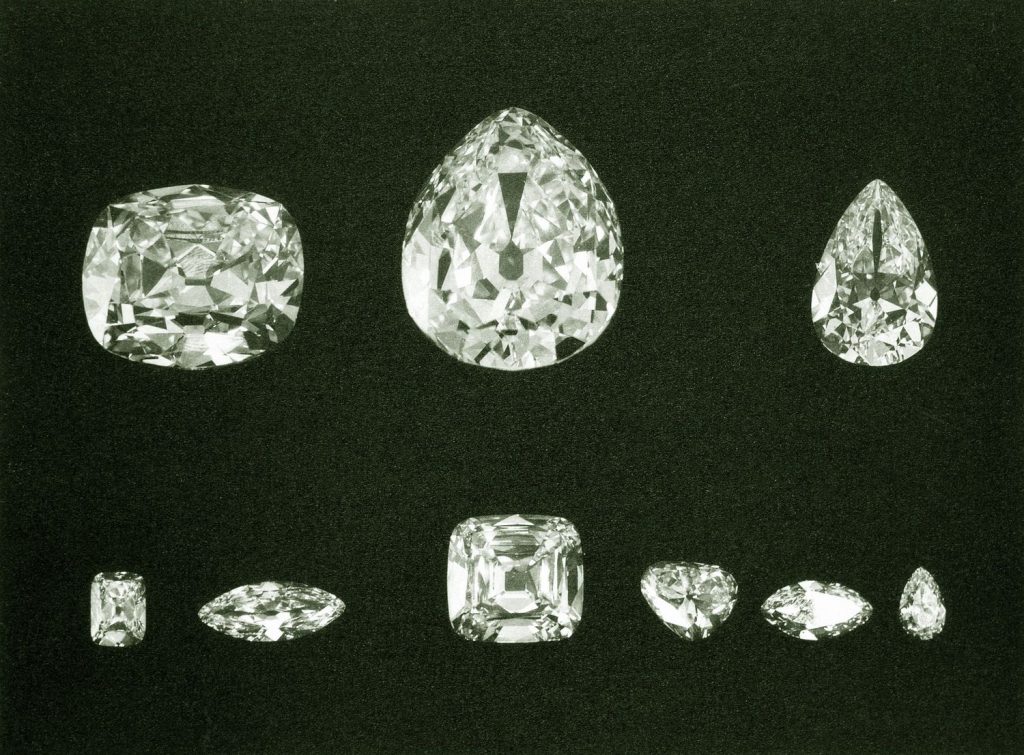
The nine primary stones cut from the Cullinan Diamond. (top – II, I, III; bottom – VIII, VI, IV, V, VII, IX)
photo: Royal Collection Trust / © His Majesty King Charles III 2023
The Cullinan Diamond, found in 1905, was the largest gem-quality rough diamond ever discovered, weighing 3,106 carats. It was found on January 26, 1905 at the Premier No. 2 mine in Cullinan, South Africa (then the Transvaal Colony).
The large stone went on display in Johannesburg shortly after it was found, and then in April 1905, it was sent to the company’s London sales agent to be put up for sale. Despite much interest, the stone was never sold.
The Transvaal Prime Minister, Louis Botha, brought up the idea of buying the stone and gifting it to King Edward VII. At first, the King was advised to decline the offer, but later was persuaded by Winston Churchill – then the Colonial Under-Secretary – to accept it. The Transvaal government purchased the stone in October 1907 for £150,000.
The rough diamond was presented to King Edward VII at Sandringham House on November 9, 1907 – the king’s 66th birthday. It was promptly announced that the King was accepting the gift “for myself and my successors”, and that “this great and unique diamond be kept and preserved among the historic jewels which form the heirlooms of the Crown”.
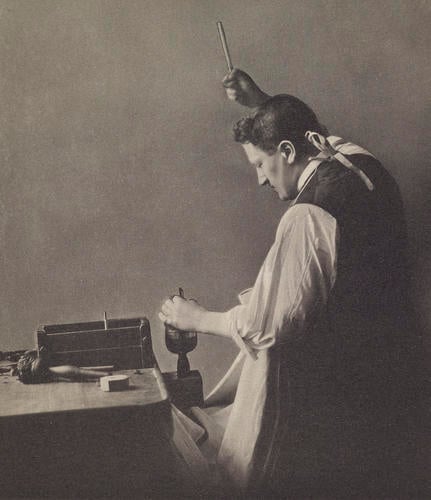
Mr. Asscher using the hammer for the first operation on the Cullinan Diamond, February 1908. photo: Royal Collection Trust / © His Majesty King Charles III 2023
Joseph Asscher & Co. in Amsterdam, was chosen to cut the large stone into the brilliant diamond we see today. After several weeks of planning, the first cut was made on February 10, 1908. However, it would be another eight months before the process was completed. The result was nine larger stones – totally 1,055.89 carats – as well as 96 brilliants and some unpolished fragments. Each of the nine larger stones were assigned a number – I through IX.
Cullinan I and II were given back to King Edward VII, and they became part of the Crown Jewels. Cullinan I was set in the Sceptre, and Cullinan II set in the Imperial State Crown. The remaining 7 stones (along with the brilliants and fragments) remained with Mr. Asscher as payment for his services. However, King Edward personally purchased the Cullinan VI as a gift for his wife, Queen Alexandra, that same year.
In 1910, after Edward VII died, the South African government purchased the remaining stones and presented them to Queen Mary, who quickly had them put in various settings which she used for the rest of her life. Unlike Cullinan I and II, the rest of the jewels were part of the Queen’s personal collection. Upon her death in 1953, she left them to her granddaughter, Queen Elizabeth II. They were then inherited by King Charles III in 2022.
CULLINAN I
Cullinan I – known as the Great Star of Africa – is part of the Crown Jewels, set in the top of the Sovereign’s Sceptre with Cross. At 530.2 carats, this pear-shaped diamond is the largest clear cut diamond in the world. It was set in the sceptre in 1910, and first used for the 1911 coronation of King George V and Queen Mary. The stone is removable, and Queen Mary often wore the Cullinan I suspended from the Cullinan II as a brooch.
CULLINAN II

Cullinan II, set in the Imperial State Crown. photo: Royal Collection Trust / © His Majesty King Charles III 2023
Cullinan II – known as the Second Star of Africa – is part of the Crown Jewels, set in the front of the Imperial State Crown. It weighs 317.4 carats, and is a cushion cut. As with most of the jewels, it can be removed from the crown, and was worn often by Queen Mary as a brooch, with the Cullinan I suspended from it.
CULLINAN III and CULLINAN IV
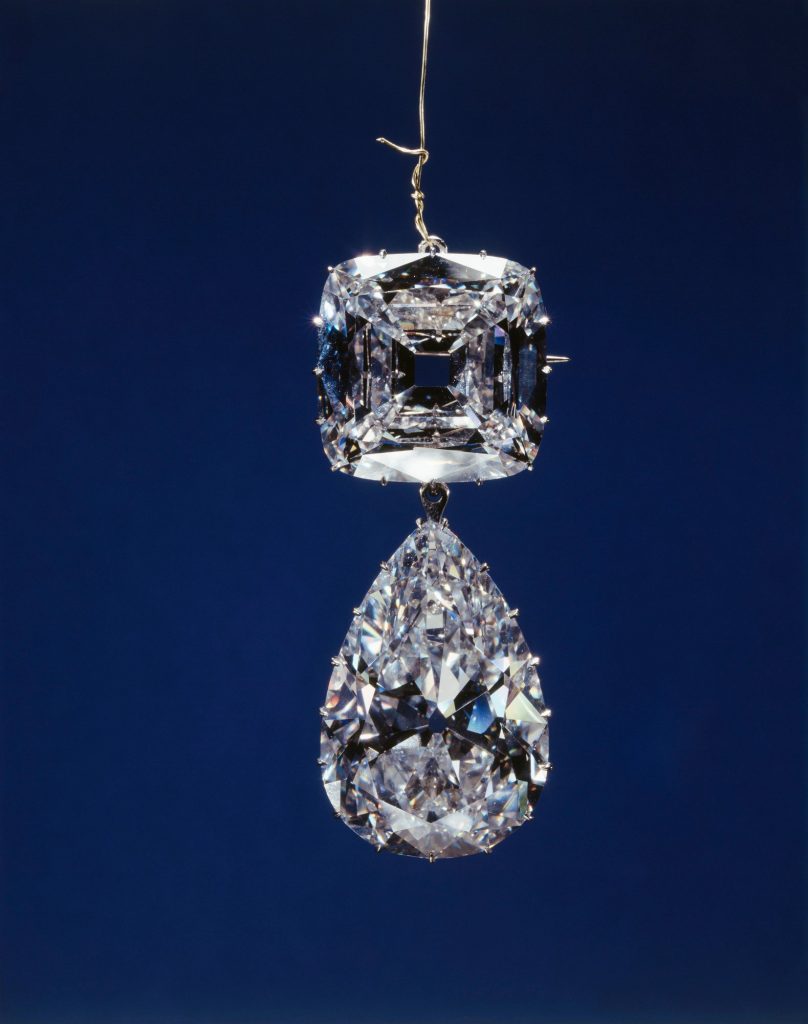
Cullinan III suspended from Cullinan IV. photo: Royal Collection Trust / © His Majesty King Charles III 2023
The Cullinan III and Cullinan IV were first used in Queen Mary’s Crown for the 1911 coronation. Cullinan III is a 94.4 carat pear-shaped diamond, and was set in the cross pattée at the top of the crown. Cullinan IV is a 63.6 carat square-cut diamond, and was set in the front band of the crown, just beneath the Koh-i-Noor Diamond.
In 1914, both were removed from Queen Mary’s Crown and replaced with glass replicas. From that time until her death in 1953, Queen Mary often wore them paired together as a brooch, as seen in the photo above.
Queen Elizabeth II first wore the brooch in 1958 for a visit to the Asscher Diamond Company while on a State Visit to the Netherlands. In a touching gesture – and understanding the magnificence of the jewels – The Queen even removed the brooch to allow Louis Asscher (the 84-year old nephew of Joseph Asscher) to see and touch the stones 51 years after they’d first been cut.
The late Queen continued to wear the brooch, especially at important events and occasions, such as her Diamond Jubilee in 2012.
CULLINAN V
The Cullinan V is an 18.8 carat heart-shaped diamond, set in a platinum brooch. It formed part of the stomacher that Queen Mary had made to wear at the Delhi Durbar in 1911. Although typically worn alone, it can also be combined with Cullinan VII or Cullinan VIII. For the 1937 coronation of King George VI and Queen Elizabeth, Queen Mary had the Cullinan V added to her crown, which she wore without the arches or velvet cap. As a nod toward both Queen Mary and the late Queen Elizabeth II, the Cullinan V is again being added to Queen Mary’s Crown which is being used by Queen Camilla for the 2023 coronation.
CULLINAN VI
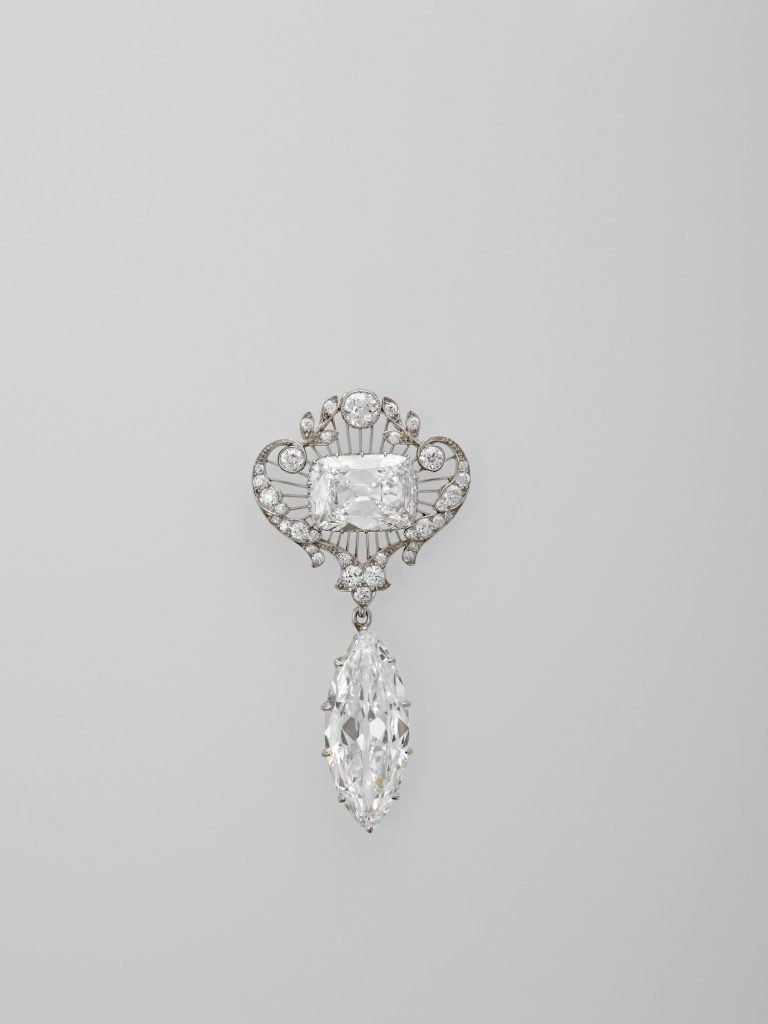
Cullinan VI suspended from Cullinan VIII. photo: Royal Collection Trust / © His Majesty King Charles III 2023
The Cullinan VI is an 11.5 carat marquise-cut diamond which was purchased by King Edward VII in 1908, as a gift for his wife, Queen Alexandra. Queen Mary inherited the stone in 1925, and since then it is typically worn suspended from the Cullinan VIII brooch, as seen above.
CULLINAN VII
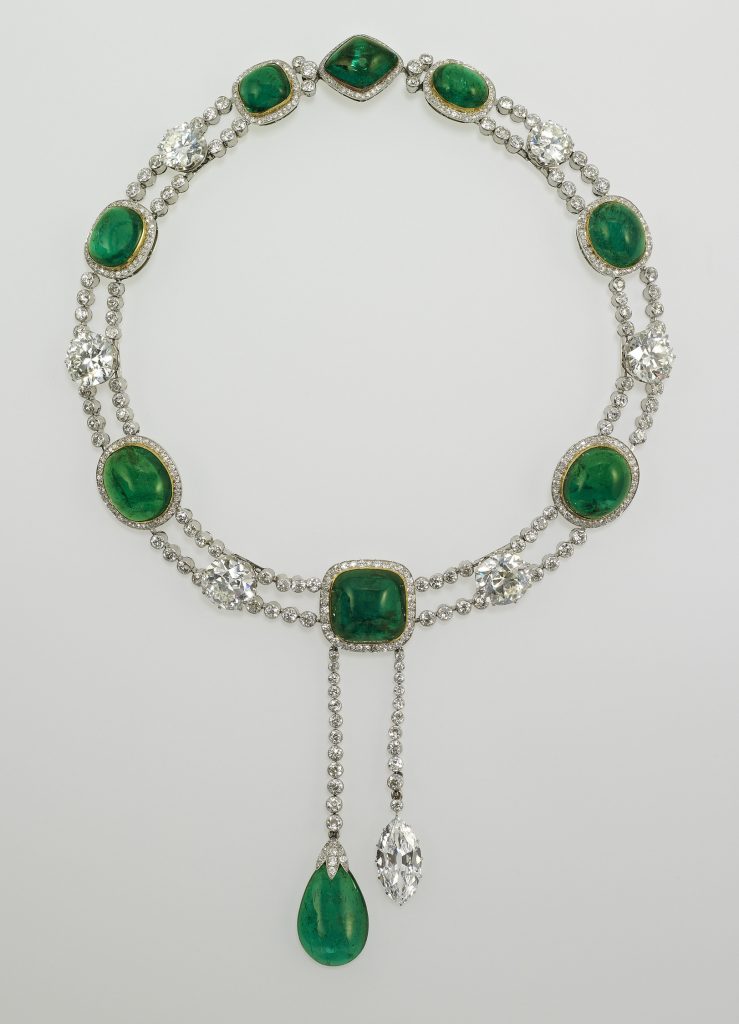
Cullinan VII, as part of the Delhi Durbar Neclace. photo: Royal Collection Trust / © His Majesty King Charles III 2023
The Cullinan VII is an 8.8 carat marquise-cut stone which is part of the Delhi Durbar Necklace, created in 1911. The stone is set as a pendant on the necklace, on a detachable chain of ten graduated brilliants.
CULLINAN VIII
The Cullinan VIII is a 6.8 carat emerald-cut stone set in a platinum brooch, very similar to the Cullinan V. Like the Cullinan V, the Cullinan VIII brooch was part of Queen Mary’s stomacher for the 1911 Delhi Durbar. Today it is typically worn with Cullinan VI suspended as a pendant (as seen in the photo above with Cullinan VI).
CULLINAN IX
The smallest of the nine stones from the Cullinan Diamond, the Cullinan IX is 4.39 carats. In a stepped pear-shape cut, the stone is set in a platinum ring – known as the Cullinan IX Ring. Along with the Cullinan VII, this stone appears to have remained in its original setting and use since 1910.
This article is the intellectual property of Unofficial Royalty and is NOT TO BE COPIED, EDITED, OR POSTED IN ANY FORM ON ANOTHER WEBSITE under any circumstances. It is permissible to use a link that directs to Unofficial Royalty.

